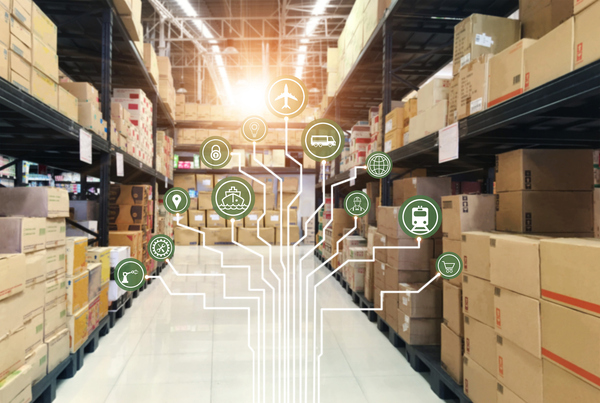Understanding the types of warehouse automation available to your business
Sponsored by OrderWiseLooking to speed up fulfilment and level up operations across your supply chain? Explore the types of warehouse automation available to your business

Warehouse automation is the process of automating the movement of stock into, within and out of warehouses, eliminating tasks that require repetitive physical work and laborious data entry and analysis.
But warehouse automation comes in many flavours, and choosing the right one for your business can be a tricky proposition. Every business will need a unique method with its own unique functionality, but at its most basic level, warehouse automation can be categorised into two broad types – digital and physical.
Digital warehouse automation relies on software to reduce or eliminate manual processes. Physical warehouse automation typically includes mechanised automation that has an actual presence on site.
Ultimately, both types of automation have the potential to minimise human error, reduce costs, relieve manual labour and improve working conditions. Unsurprisingly, there’s an extensive list of technology available, but here are just a handful of the common forms of digital and physical automation you might find in any modern warehouse:
Digital automation
Enterprise resource planning (ERP): An ERP solution integrates all aspects of a business – from warehouse management, supply chain and inventory through to accounts, sales, customers and more – all in a centralised application.
Warehouse management system (WMS): A WMS brings together all the data, information and workflows in a warehouse or distribution centre. These can vary from platforms focusing specifically on WMS or supply chain management.
Handheld terminals (HHT): Handheld terminals or handheld devices provide a fast and efficient method to book goods into a warehouse. As well as creating, allocating or combining picks, users can perform stock takes and flag any stock issues.
Machine learning: In a warehouse environment, machine learning can be used as an alternative to traditional planning that relies on multiple workflows and engineering. Instead of the usual methods, machine learning can be used to predict how long it will take to complete a given task by comparing streams of existing data. The data can come from several sources, including warehouse management systems and handheld terminals.
Physical automation
Autonomous mobile robots (AMRs): AMRs use localised positioning systems to take the most efficient routes through your warehouse – consistently moving high volumes of stock from one point to another as required. Using advanced laser guidance systems to detect obstacles, AMRs can safely navigate dynamic environments with lots of human traffic.
Sortation equipment: Sortation equipment identifies items on a conveyor system and diverts them to a warehouse location for receiving, picking, packing or shipping.
Pick-to-light systems: Pick-to-light systems combine mobile barcode scanning devices and digital light displays to guide warehouse pickers around a warehouse – whether that’s where to find an item or where to place it.
Ultimately, none of these types of automation will deliver true benefit on their own. But when you combine these technologies to create an automation ecosystem, then you have a connected network driving efficiency, growth and high performance. And that is a game-changer.
You can discover more about the different types of warehouse automation, and their many advantages, in our comprehensive guide.
Joe Daft is Head of Robotics at Wise Robotics

Business Reporter Team
Most Viewed
Winston House, 3rd Floor, Units 306-309, 2-4 Dollis Park, London, N3 1HF
23-29 Hendon Lane, London, N3 1RT
020 8349 4363
© 2024, Lyonsdown Limited. Business Reporter® is a registered trademark of Lyonsdown Ltd. VAT registration number: 830519543





